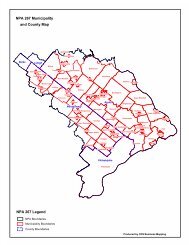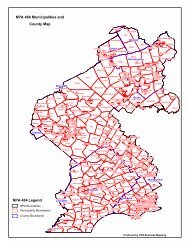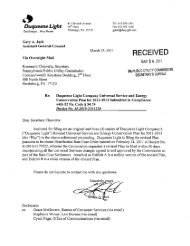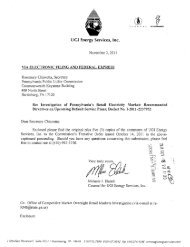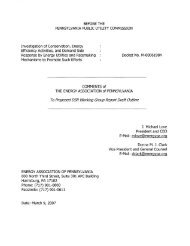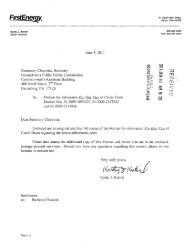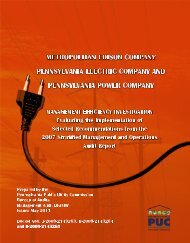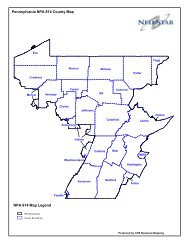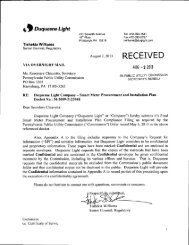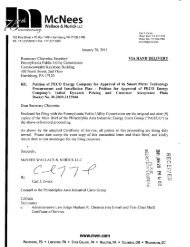2010 Report - Pennsylvania Public Utility Commission
2010 Report - Pennsylvania Public Utility Commission
2010 Report - Pennsylvania Public Utility Commission
You also want an ePaper? Increase the reach of your titles
YUMPU automatically turns print PDFs into web optimized ePapers that Google loves.
• Innovative resource planning and implementation mechanisms are needed to ensure thetimely development, siting, construction, and operation of necessary and appropriatetransmission infrastructure to facilitate achieving the goals and objectives of the variousclimate change initiatives.• As demand side resources become an increasingly significant component of the resourcemix, effective integration and verification of these resources will be vital to maintainingreliability.Reserve margins in many NERC regions have increased compared to 2008 projections due inlarge part to the economic recession, which has reduced demand projections. An increase indemand side management programs and the addition of new resources have also contributed tothis trend. Demand is projected to grow within the next three years as the economy recovers.Demand is projected to increase 14.8 percent between 2009 and 2018, compared to 16.8 percentbetween 2008 and 2017, as forecast in last year’s report. The projected compound annualgrowth rate over the 10-year period for peak demand has decreased from 1.6 percent in 2008projections to 1.5 percent in 2009 projections. This projected growth rate reflects a continueddecline from previous forecast periods and parallels a decline in the growth in projected energyuse over similar forecast periods.Net internal demand in the United States is expected to increase by 111,799 MW or an average of1.6 percent per year for the next nine years, while deliverable capacity resources (existing-certain,resources, future-planned resources, and net firm and expected transactions) are projected toincrease by 78,380 MW or 8.4 percent (0.9 percent annually). Reserve margins are expected todecline from 24.1 percent in summer 2009 to 17.4 percent in 2018.If a region/subregion provides its own specific margin level based on load, generation andtransmission characteristics, as well as regulatory requirements, that level is adopted as theNERC Reference Reserve Margin Level. If not, NERC assigns a 15 percent reserve margin forpredominately thermal systems and 10 percent for predominately hydro systems. The NERCReference Reserve Margin Level of 15 percent is used in the United States to identify whenadditional resources may be needed. The existing capacity sufficiently meets the NERCReference Reserve Margin Level through 2018.64<strong>Pennsylvania</strong> <strong>Public</strong> <strong>Utility</strong> <strong>Commission</strong>



